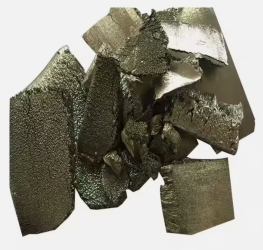  Sodium is a chemical element with symbol Na and atomic number 11. Classified as an alkali metal, sodium is a solid at room temperature, a soft metal that tarnishes within seconds of being exposed to the air. It also reacts vigorously with water.
Sodium is a chemical element with symbol Na and atomic number 11. Classified as an alkali metal, sodium is a solid at room temperature, a soft metal that tarnishes within seconds of being exposed to the air. It also reacts vigorously with water.The most common compound of sodium is sodium chloride, or common salt. It is added to food, and often used to de-ice roads in winter. Sodium carbonate (washing soda) is another common sodium compound. It is also used as a water softener. Sodium is the sixth most common element on Earth, and makes up 2.6% of the Earth's crust. This highly soluble salt has been leached into the oceans over the lifetime of Earth, and many salt beds are found where ancient seas have evaporated. It is also found in many minerals, including cryolite, zeolite and sodalite. Because sodium is so reactive it is never found as a metal in nature. Sodium metal has to be produced by electrolysis of dry molten sodium chloride. Sodium is used as a heat exchanger in some nuclear reactors, and as a reagent in the chemicals industry. But sodium salts have more uses than the metal itself. Sodium is important for many different functions of the human body. For example, it helps cells to transmit nerve signals, and regulate water levels in tissues and blood. Our bodies contain about 100 grams of sodium, but we are constantly losing it in different ways, so we need to replace it. We can get all the sodium we need from our food without adding any extra. The average person eats about 10 grams of salt a day, but all we really need is about 3 grams. Any extra sodium may contribute to high blood pressure. |